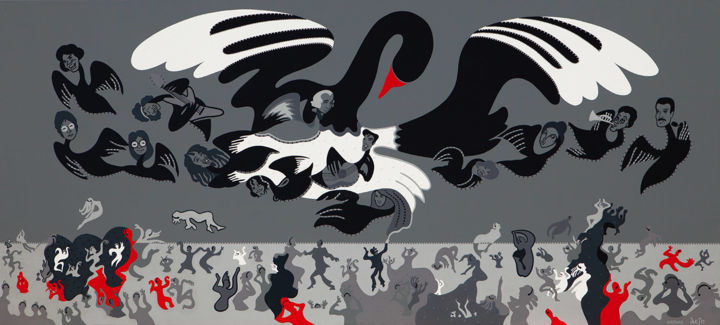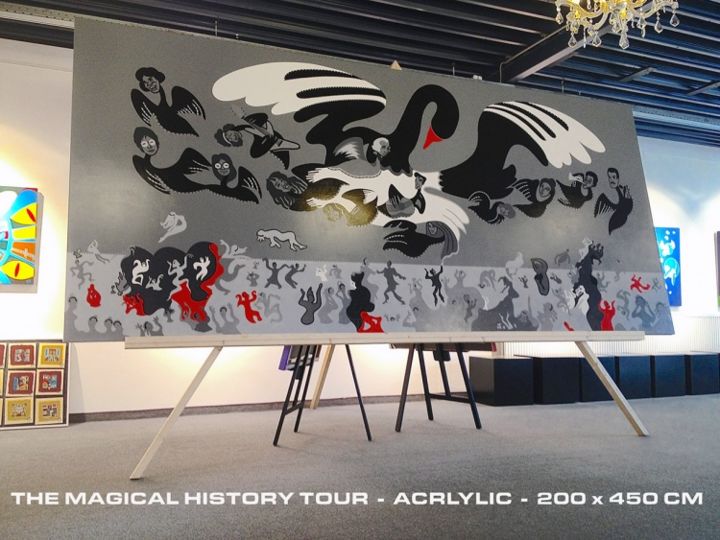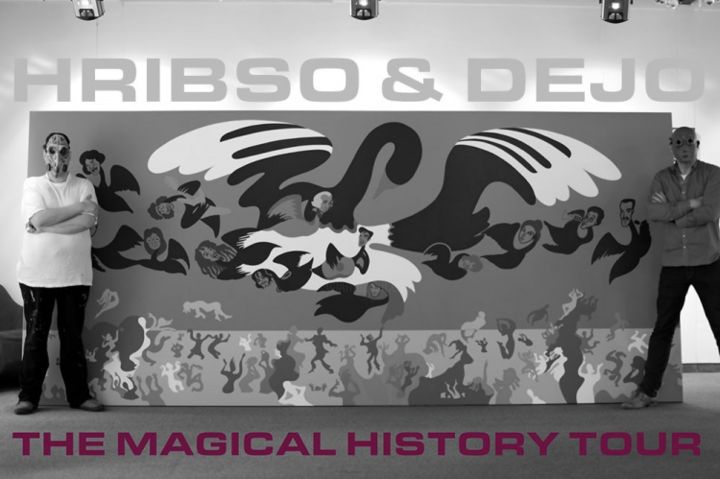



THE MAGICAL HISTORY TOUR (2014) Peinture par The Toyists Dejo
Vendu
Voir plus de The Toyists DejoL'artiste propose des œuvres sur commande
Vous avez manqué l'occasion d'acheter cette œuvre ? Bonne nouvelle : l'artiste peut aussi créer une œuvre sur mesure, rien que pour vous!
Vendeur The Toyists Dejo
-
Œuvre d'art originale
Peinture,
Acrylique
sur Toile
- Dimensions Hauteur 2,4in, Largeur 78,7in
Download our free TOYISM App in iTunes and Google Play!
Thèmes connexes
Play with art? Can you play with art? The artist collective known as the Toyists think you can. They campaign against the common laws of art. They use playing as a starting point for a new sort of art and they lay down their artistic credo - which handles usage of form, style and vivid colours - in a manifesto.
These were the first words from Frans Haks, former manager of the museum of Groningen, opening the Toyism exhibition "TOYISM NOT FOR BABIES", held in 2004 at a large art gallery in the south of Holland. Unfortunately Frans is no longer among us, but Toyism still operates similarly.
Toyism started in 1992 in Emmen. Toyism is based on a manifesto. This manifesto is written on the 5th of September 1992 and is called 'Moeder', the Dutch word for mother. This manifesto can be seen as the mother of all their works of art and it is stated as a notarial deed in 1993. Its content is known only by the Toyists and will not be revealed to the public. Things like usage of colour, technique, form etc... are mentioned here. But of course it is the artist himself/herself determining what he/she produces.
Why is the name 'Moeder' used? Mother is the origin and with her characteristics she delivers an important contribution to every piece of art produced by the Toyists. Better stated, Mother always leaves traces of DNA in them. Mother relates to a partner, a male or female artist. This partner also leaves its traces of DNA. Their relationship produces offspring, children representing Toyism art pieces. The artworks always contain characteristics of both, Mother and her partner. But, because there are different partners, (Mother isn't very particular :-) all the children are different too. Someone from Malaysia has another background and culture than, for instance, somebody living in Iceland or the Netherlands. This is a nice phenomenon, because that person uses its own ideas, opinions and notions in the Toyism style, causing a true enrichment, the style becomes even more interesting.
Within Toyism pseudonyms are used. Every artist comes up with his/her own pseudonym and signs his/her work with that chosen name. The name starts with a letter from the alphabet that is not already in use by another Toyist. Currently there are 21 Toyists within the group, so the maximum number of Toyists is 26, obviously. As can be seen in the brochures and on the website their faces are never revealed! They wear masks as soon as a camera is in sight and they are recognised only by a Toyism puppet. Only the puppet and the pseudonym are linked to the pieces of art. It is not the person and his/her face that counts, only art is important. This aspect leads to acting as a group, rather than an individual; this is the basic principle of Toyism.
-
Nationalité:
PAYS-BAS

- Date de naissance : date inconnue
- Domaines artistiques:
- Groupes: Artistes Contemporains Hollandais









